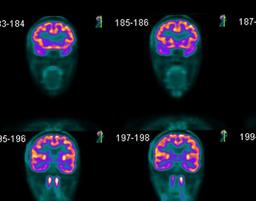
Year 11 Psych: Psychological Development
Quiz by Maddy Pepperell
Feel free to use or edit a copy
includes Teacher and Student dashboards
Measure skillsfrom any curriculum
Tag the questions with any skills you have. Your dashboard will track each student's mastery of each skill.
- edit the questions
- save a copy for later
- start a class game
- automatically assign follow-up activities based on students’ scores
- assign as homework
- share a link with colleagues
- print as a bubble sheet
- Q1
In terms of the nature versus nurturedebate, which statement would a member of the nurture school of thought likelynot believe?
The primary influence of development stems from factors that are genetically passed down from parents to offspring.
Genetics provide little influence on development as compared to environmental factors.
Humans begin life as a ‘blank slate’ and are shaped by their experiences.
Twins that are separated at birth are likely to have significantly different developmental outcomes as compared to those who grew up in the same environment.
30s - Q2
Which of the following is an example of ahereditary factor?
number of siblings
hormones
socioeconomic status
genes
30s - Q3
Attachment is
not related to mental wellbeing later in life.
directly related to intelligence and cognitive ability.
the social bond between two infants.
the emotional bond between an infant and their caregiver.
30s - Q4
From the experiments he carried out ondifferent factors which affect attachment in rhesus monkeys, Harlow concludedthat...
food is not as important as contact comfort in creating an attachment and influencing emotional development.
None of the above are correct.
contact comfort is not as important as food in creating an attachment and influencing emotional development.
contact comfort is equally as important as food in creating an attachment and influencing emotional development.
30s - Q5
In terms of nature versus nurture,attachment theory emphasises the influence of what factors on development?
Psychological factors.
Environmental factors.
Biological factors.
Hereditary factors.
30s - Q6
In an experiment devised by Ainsworth knownas ‘The Strange Situation’, Emily who is 18-months-old, does not show anydistress when her mother leaves, nor does she seem to be happy when her motherreturns.
According to Ainsworth, Emilyis demonstrating ___________ attachment.
Negative
Insecure-avoidant
Insecure-resistant
Secure
30s - Q7
Which of the following statements aboutthe biopsychosocial approach is not correct?
It considers all the biological, psychological and social factors in a person’s life separately.
It considers that all the biological, psychological and social factors in a person’s life interact.
It can be used to consider both development and mental wellbeing.
It is a holistic approach that can be used for both diagnosis and management of mental disorders.
30s - Q8
Jane's parents have both been diagnosedwith Major Depressive Disorder. According to the biopsychosocial model, thismeans that
Jane will have an increased chance of developing depression due to a genetic predisposition.
Jane will have developed a genetic immunity to depression.
Jane has the exact same chance of developing depression as anyone else.
Jane will develop depression at some point in her life.
30s - Q9
Emotional development involves changes in
an individual’s mental abilities.
how a person experiences, expresses and interprets a range of feelings.
an individual’s bodily systems.
how a person interacts with others in different social situations.
30s - Q10
Cognitive development involves changes in
an individual’s mental abilities.
an individual’s bodily systems.
how a person experiences, expresses and interprets a range of feelings.
how a person interacts with others in different social situations.
30s - Q11
The correct order of the stages ofPiaget’s theory of cognitive development is
sensorimotor, pre-operational, formal operational, concrete operational.
formal operational, sensorimotor, pre-operational, concrete operational.
concrete operational, pre-operational, sensorimotor, formal operational.
sensorimotor, pre-operational, concrete operational, formal operational.
30s - Q12
Which of the following is the most correct explanation for why it is easier to learn multiple languages as a child than as an adult?
Acquiring a second language has a critical period that takes place during infancy.
Children’s brains are more malleable and able to be shaped by exposure to experiences, such as new languages.
Adults have passed the critical period of language acquisition, so will not be able to develop grammatical skills in a second language.
Acquiring a second language has a critical period that takes place during childhood.
30s - Q13
If the acceptability of a behaviour is considered with reference to cultural normsor standards, which criterion is being used?
personal distress
cultural perspectives
social norms
maladaptive behaviour
30s - Q14
Alex drinks a bottle of wine alone every night to cope with her divorce, and this is having an impact on her ability to keep her life in order, see her friends and show up to work on time. According to which criterion is her behaviour atypical?
statistical rarity
maladaptive behaviour
social norms
personal distress
30s - Q15
Alex is also experiencing unpleasant or upsetting emotions, including sadness, anxiety and feeling overwhelmed. According to which criterion is her behaviour atypical?
personal distress
maladaptive behaviour
statistical rarity
social norms
30s